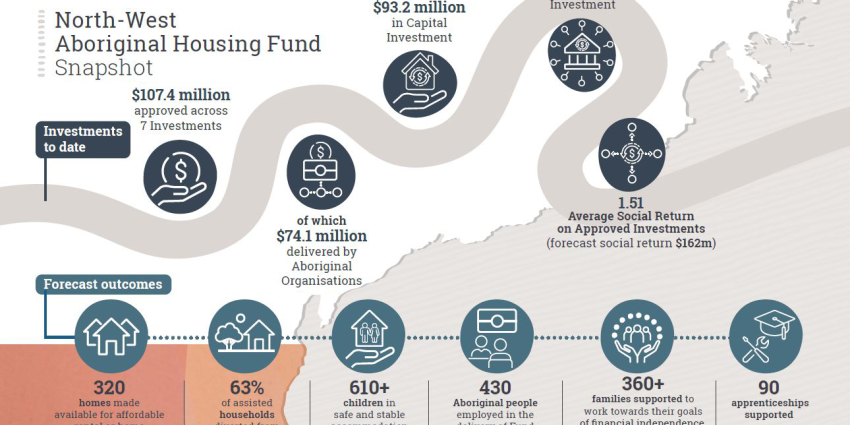
This Anti-Poverty Week (16-22 October), we acknowledge the work of our North-West Aboriginal Housing Fund team. Pictured here are Lorna and Kimberlie – participants of the NWAHF’s Hedland Aboriginal Housing Program.
More than 316,000 Western Australians (12 per cent) are living in poverty.
Poverty is about a lack of money – both income for now and savings or wealth. But it can also be about not having a lot of other things – affordable housing, access to good education or health services.
It also disproportionately impacts Indigenous Australians, who are more likely to both be in poverty, and move into poverty, than those who are non-Indigenous.
As the name suggests, the North-West Aboriginal Housing Fund (NWAHF) invests in significant housing initiatives. However, the intent of the Fund is to demonstrate how investment in the diversification of housing options for Aboriginal families can help break the cycle of generational dependency, and ultimately, fight against poverty.
In partnership with Aboriginal Community Controlled Organisations, the NWAHF team has, and continues to engage in a co-design process for each investment, allowing community to shape what is delivered and ensure that projects fully meet the bespoke needs and goals of clients.
To date, there are six NWAHF investments in delivery. While each are centred around housing, they offer peripheral support to empower participants to build their financial capability and literacy, as well as uptake work and study opportunities. Aboriginal people employed as apprentices, tradespeople and labourers for housing construction have also seen a positive and sustained effect on their own wealth and wellbeing.
A common theme among clients before engaging with NWAHF initiatives, is a sense of hopelessness, stemming from a lack of tools, support or prospects to become socially and economically independent.
Mother and daughter duo Lorna and Kimberlie lived in public housing for 15 years. When they saw the NWAHF’s Hedland Aboriginal Home Ownership Program advertised on Facebook, they signed up and now maintain a stable residence. They have also since learnt about budgeting and received assistance from Bloodwood Tree Association to help manage finances.
“We didn’t want to fall into not paying rent because we [weren’t] working, so we worked out with Bloodwood a bit of a game plan,” Lorna said.
The significant and tangible feats of the NWAHF continue to play a critical role in removing barriers that prevent families from exiting poverty. Our regional North-West communities are receiving the attention and support they need and deserve to achieve wellbeing, a fair and good quality of life, and improved outcomes for the generations to come.



